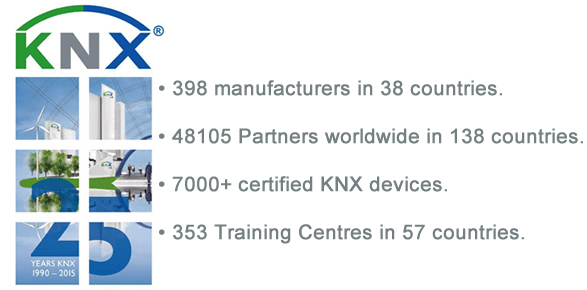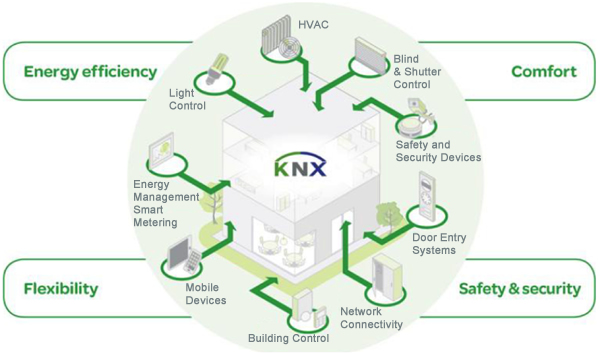 By Charlotte Blissett-Griffiths, Ivory Egg (UK) Ltd.
By Charlotte Blissett-Griffiths, Ivory Egg (UK) Ltd.
With KNX celebrating its 25th anniversary this year, there has been a lot of information extolling not only the success that KNX has had, but also the amazing statistics that go with the system.

The image that this creates is that KNX is an extremely powerful and versatile system that can control or interface to almost anything. Indeed from BMS (Building Management System) systems such as BACnet to all major AV systems, and even a large number of consumer products such as Phillips Hue or Sonos, KNX has a solution.
Simple Principles
However reassuring this is, what KNX actually does is very simple. Not because the system, or indeed what we are trying to control, is simple, but because the level of interfacing and interaction is simple. In fact, there are really only three levels of control that are required, namely:
• turn something on/off.
• turn something up/down.
• send a value.
For example, control of a standard KNX room thermostat can easily be reduced to the above three parameters. Sure, there are numerous objects and data point types, and of course these are needed for intercommunication, but shutting down the zone when a window is opened, linking to an external temperature sensor or linking the proportional demand output to a manifold controller are all very simple actions. They are just packaged in a format that allows interoperability.

A Decentralised System
But how can this be simple when we are working with so many complicated devices with numerous functions, parameters and configurations? The key here is the decentralised nature of KNX.
KNX is a bus system that takes advantage of distributed processing. In other words,
since each KNX device has in-built intelligence it has the capability to control its own function, meaning that complex operations can take place before information is required to be sent on the bus.

Some might argue that this increases the complexity because a KNX system can comprise numerous devices that require configuration, as opposed to a more traditional BMS or AV system that is managed centrally in one device. This may be true, but the beauty of KNX is in the default settings. Sure, there are a lot of items to configure, but in most cases, the default settings of a device as they appear in the software used to commission KNX projects, are correct for most applications. In any case, the sheer number of devices possible with KNX makes central intelligence impractical.

Programming
Even the software used to commission KNX projects, namely ETS, is not that complicated, although it may seem so on the surface. To configure a project from beginning to end, there are only seven individual steps, and some of these are very simple, such as creating and naming the project. Of course, there is a lot more to learn and understand about the software, but there is no need to overcomplicate it.
Conclusion
A KNX system works by breaking communication down to basic messages on a bus made of twisted pair cable, while the required logic and intelligence is performed within the connected devices. This allows KNX to become a scalable, intelligent and powerful system. Pretty simple really – just like turning something on or off.
Charlotte Blissett-Griffiths is the Marketing Coordinator for Ivory Egg (UK) Ltd, a supplier of leading KNX products and provider of KNX training courses. Ivory Egg runs a number of training courses on how to achieve heating/cooling control with KNX.











